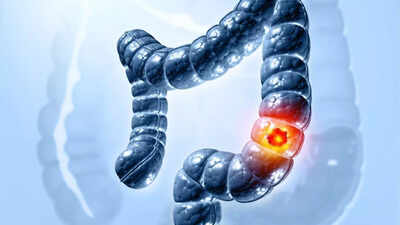
There are numerous unsolved mysteries in life. Why is urine yellow? It’s a question that has been shrugged off for years. Instead of casting aside this question, scientists decided to delve into it, uncovering a previously unknown microbial enzyme responsible for the color.
The elusive enzyme, now identified as bilirubin reductase, was discovered by researcher and assistant professor Brantley Hall of the University of Maryland. Hall was part of a team based at the university and the National Institutes of Health.
Bilirubin, an orange pigment released by dying red blood cells, is utilized by gut microbes along with bilirubin reductase to break it down into colorless urobilinogen. From there, it degrades into the yellowish urobilin, giving urine its characteristic hue. While urobilin was previously associated with the color of urine, the enzyme responsible for initiating the process and producing urobilinogens was previously unknown.
“It was previously thought that multiple enzymes were involved in the reduction of bilirubin, but our results support the finding that a single enzyme performs the reduction of bilirubin to urobilinogen,” stated the research team in a study published in Nature Microbiology.
Gut instinct
With knowledge that some gut bacteria were capable of reducing bilirubin, Hall and his team sought to identify the specific species responsible and how they achieve this. This involved finding the gene responsible for encoding bilirubin reductase.
Previous research had found that the species Clostridiodes difficile could reduce bilirubin, but the mechanism it used was unknown. Using it as a point of comparison, the team cultured various species of gut bacteria and exposed them to bilirubin to determine their ability to produce urobilinogen, which was detected using a fluorescence assay.
The fluorescence assay indicated to Hall and his colleagues that nine strains within the tested species were likely capable of reducing bilirubin, although the process by which these bacteria were breaking it down remained unclear.
Following the fluorescence assay, the genomes of the most closely related strains were analyzed and several were found to share a gene encoding an enzyme capable of reducing bilirubin—bilirubin reductase.
The bacterial strains that metabolized bilirubin using bilirubin reductase all originated from species within a single clade, which the researchers informally referred to as the bilirubin reductase clade. Most of these species belong to the class Clostridia in the phylum Firmicutes, an important bacteria phylum for gut health.
More than meets the eye
The discovery of bilirubin reductase has implications beyond the color of urine. After identifying the enzyme, the researchers discovered that while bilirubin reductase is present in healthy adults, it is deficient in newborns and adults with inflammatory bowel disease, which could have implications for future treatments.
By sequencing infant gut genomes, Hall and his team observed that bilirubin reductase was often absent during the first few months of life. Excessive buildup of bilirubin in the blood causes the skin and the whites of the eyes to become yellow, a condition known as jaundice. Most infants experience some level of jaundice, but it typically resolves on its own.
The absence of bilirubin reductase is also linked to pigmented gallstones in adults with inflammatory bowel disease. Sequencing the gut genomes of adult patients with Crohn’s disease or ulcerative colitis revealed a deficiency of this enzyme in most cases.
“With knowledge of the species, genes, and enzymes involved in bilirubin reduction, future research can now focus on the extent to which gut microbial bilirubin metabolism affects…the role of bilirubin reduction in health and disease,” noted the researchers in the same study.
There is still more research to be done on bilirubin reductase and its potential health implications. The team suspects there may be a connection between the amount of urobilin produced in the body and insulin resistance, obesity, heart disease, and even heart failure. Apart from that, we finally understand why urine is yellow.
Nature Microbiology, 2023. DOI: 10.1038/s41564-023-01549-x













